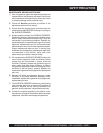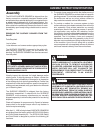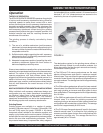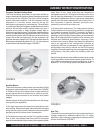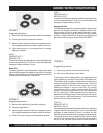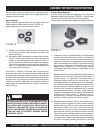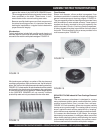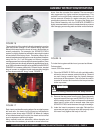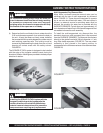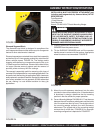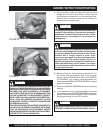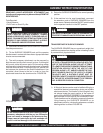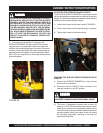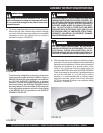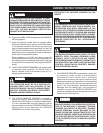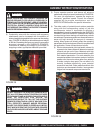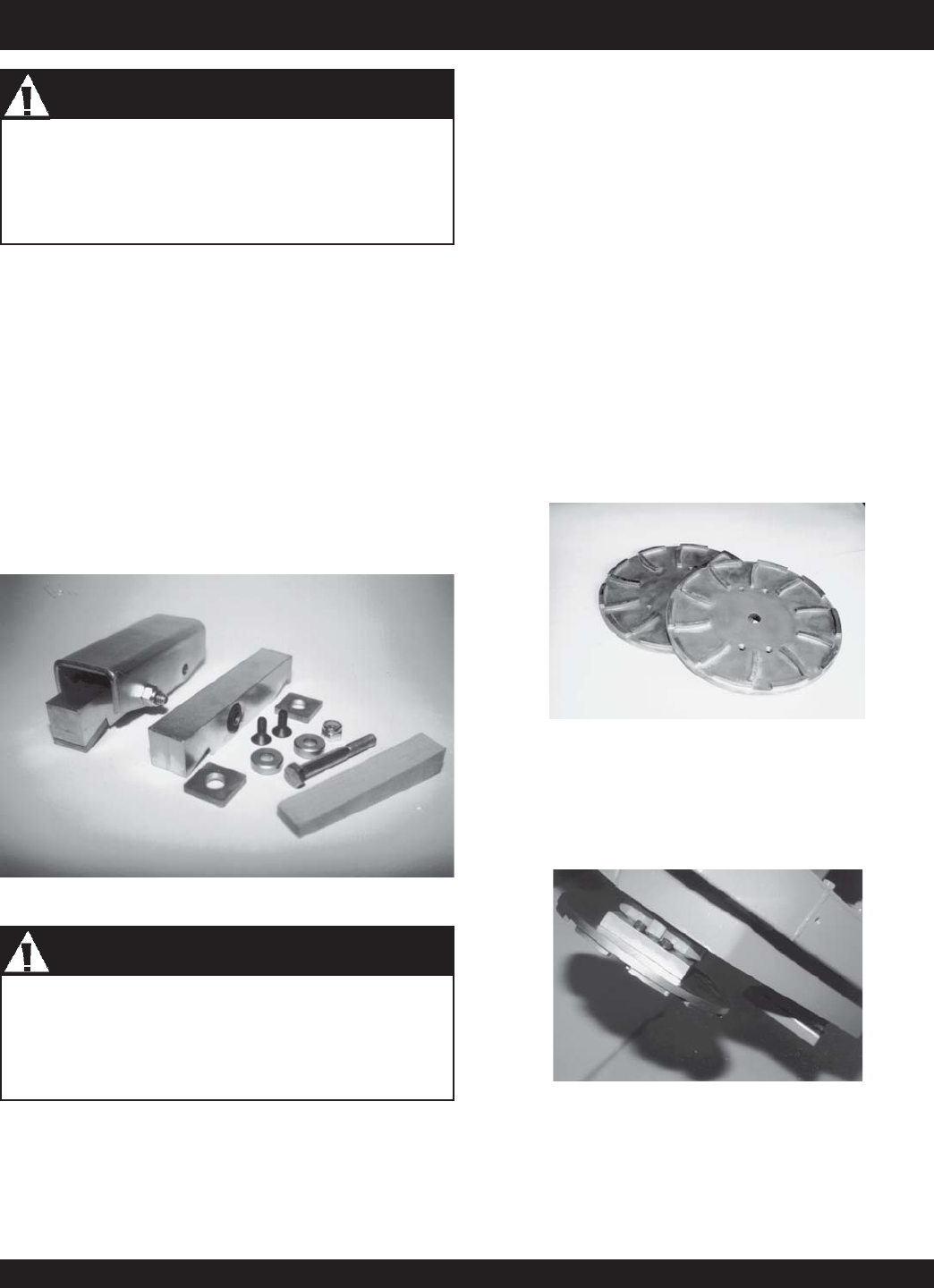
SFG10E ELECTRIC SURFACE GRINDER — OPERATION AND PARTS MANUAL — REV. #2 (05/28/09) — PAGE 19
ASSEMBLY INSTRUCTIONS/OPERATIONS
An insufficient seating torque value will allow the
insert to become loose from the unit body, resulting
in premature component wear and improper
scraping action. An excessive torque value will strip
the threads of the capscrew or unit body.
CAUTION
CAUTIONCAUTION
CAUTIONCAUTION
CAUTION
4) Determine that the unit body is free to rotate about the
5/16 inch diameter capscrew that retains the body to
the unit. A body that does not freely rotate indicates
that a material build-up exists between the rubber mount
and retaining capscrew exits. This build-up must be
removed by disassembling the body from the unit and
cleaning all contact areas with the safety solvent.
FIGURE 20.
The SCRAPE-R-TACH system is designed to be installed
with the edge of the tungsten carbide inserts facing the
direction of rotation. Markings are provided to indicate proper
direction of rotation.
FIGURE 20
Multi-Segmented, Dry Diamond Disc
Many times increased concrete removal rates can be
achieved with the use of multi-segmented, dry diamond
discs. FIGURE 21. These discs are designed to operate
dry or can also be utilized with water. If the wet option is
chosen, an external source for providing water must be
devised. No provision for water use is provided with the
SURFACE GRINDER. Typical discs are approximately 10
inch diameter and feature up to 20 diamond segments that
are welded or brazed to each assembly.
To install the multi-segmented, dry diamond disc, the
standard, aluminum, multi-accessory disc is first removed
from the SURFACE GRINDER. The diamond disc fastens
directly to the gimbal head with 3/8 inch diameter x 1 inch
long Allen head capscrews. FIGURE 22. The rear wheel
assembly is then placed in the lowest position to
compensate for the thickness variance of the diamond discs.
FIGURE 23.
FIGURE 21
FIGURE 22
Installing the SCRAPE-R-TACH system with the
tungsten carbide inserts facing opposite the
rotation direction will not deliver satisfactory
material removal rates and result in premature
component wear requiring early replacement.
CAUTION
CAUTIONCAUTION
CAUTIONCAUTION
CAUTION



